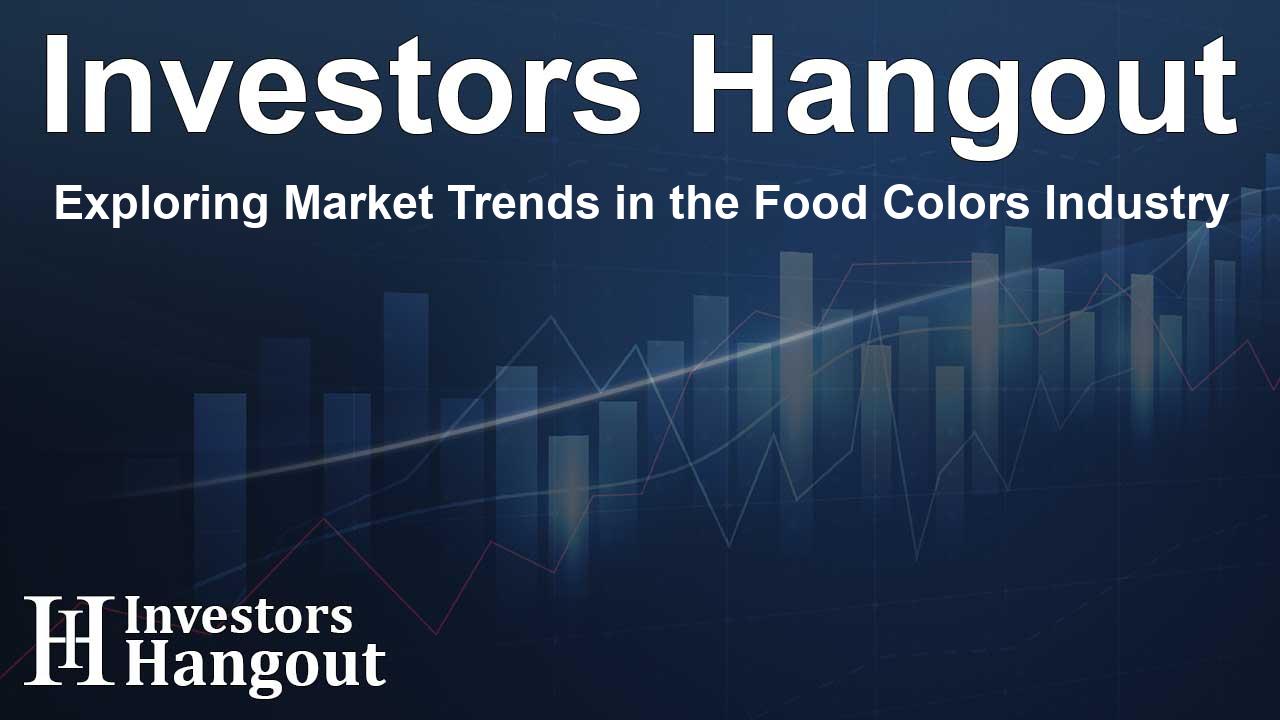Exploring Market Trends in the Food Colors Industry

Understanding the Growth of the Food Colors Market
The food colors market represents an exciting and rapidly evolving segment within the food and beverage industry. With consumer preferences shifting towards more visually appealing and naturally sourced products, the need for food colors is rising significantly. These colors not only enhance the aesthetic allure of food and beverages but also play a crucial role in improving overall consumer experience and marketability.
Market Expansion and Its Drivers
The processed and packaged food sectors are experiencing robust growth, paralleling the burgeoning demand for food colors. Recent projections indicate that the food colors market is expected to reach USD 6.0 billion by 2028, a substantial increase from USD 4.6 billion in 2023, with a compound annual growth rate (CAGR) of 5.4%. The processing of food often involves both thermal and non-thermal techniques that can alter the natural colors of products. Various factors, including temperature, moisture content, and pH levels, contribute to this alteration, thereby increasing the demand for food coloring products to restore and enhance visual appeal.
Innovations in Food Colors: Strategies for Market Leaders
To thrive in a competitive market, manufacturers are continually seeking innovative ways to enhance product appeal. The impact of social media platforms like Instagram and YouTube cannot be understated; aesthetically pleasing products gain more attention and attract consumers' interest. Vibrant, colorful foods appeal particularly to younger consumers, encouraging healthier eating habits among children. According to studies, a significant majority of consumers prioritize the appearance of food when making purchasing decisions. To meet consumer expectations, food manufacturers are increasingly driven to innovate with food colors, recognizing their importance in establishing a unique market presence.
Regional Insights: Europe’s Dominance in the Food Colors Market
Europe currently leads the global food colors market, driven by a dynamic food and beverage industry supported by a substantial number of processing businesses. The region's commitment to utilizing natural food colorings, alongside stringent regulations, further propels growth in this sector. The demand for clean and eco-friendly food ingredients aligns perfectly with consumer trends toward health and wellness. As spending on food per capita remains high, the European market for food colors continues to thrive.
Natural Colors on the Rise: Meeting Consumer Demand
The growing preference for natural colors in the food industry is marking a shift in consumer behavior. By 2028, natural colors are expected to be the fastest-growing segment, propelled by an increasing focus on clean labels and health-conscious choices. Ingredients derived from fruits and vegetables not only meet these demands but also bring additional health benefits. Popular natural color sources include carmine, anthocyanins, caramel, annatto, and chlorophyll. Conversely, the use of synthetic colors is known to be heavily regulated, which has further strengthened the demand for natural alternatives.
Leading Companies in the Food Colors Market
As the market grows, several industry leaders have emerged, contributing to the dynamic landscape of food colors:
- ADM (US)
- International Flavors and Fragrances Inc. (US)
- Sensient Technologies Corporation (US)
- DSM (Netherlands)
- Naturex (France)
- DDW (US)
- Dohler Group (Germany)
- Fiorio Colori (Italy)
- LycoRed (Israel)
- Kalsec Inc. (US)
Emerging Markets and Opportunities
The food colors market is intricately linked to various adjacent markets, creating additional avenues for growth. Stakeholders are actively exploring these connections:
- Food Flavors Market
- Microencapsulation Market
- Natural Food Colors & Flavors Market
- Specialty Food Ingredients Market
- Food & Beverages Industry Outlook
Frequently Asked Questions
What drives the growth of the food colors market?
The growth is driven by consumer demand for visually appealing, natural products in the food and beverage sector.
Which segment of the food colors market is expected to grow the fastest?
The natural colors segment is anticipated to be the largest and fastest-growing by 2028.
Why are natural colors gaining popularity?
Shifting consumer preferences towards clean, healthy, and eco-friendly ingredients are boosting the demand for natural colors.
How does social media influence food colors?
Social media platforms enhance product visibility and influence consumer preferences for visually appealing products.
Who are the key players in the food colors market?
Prominent companies include ADM, Sensient Technologies, and Naturex, among others.
About Investors Hangout
Investors Hangout is a leading online stock forum for financial discussion and learning, offering a wide range of free tools and resources. It draws in traders of all levels, who exchange market knowledge, investigate trading tactics, and keep an eye on industry developments in real time. Featuring financial articles, stock message boards, quotes, charts, company profiles, and live news updates. Through cooperative learning and a wealth of informational resources, it helps users from novices creating their first portfolios to experts honing their techniques. Join Investors Hangout today: https://investorshangout.com/
Disclaimer: The content of this article is solely for general informational purposes only; it does not represent legal, financial, or investment advice. Investors Hangout does not offer financial advice; the author is not a licensed financial advisor. Consult a qualified advisor before making any financial or investment decisions based on this article. The author's interpretation of publicly available data shapes the opinions presented here; as a result, they should not be taken as advice to purchase, sell, or hold any securities mentioned or any other investments. The author does not guarantee the accuracy, completeness, or timeliness of any material, providing it "as is." Information and market conditions may change; past performance is not indicative of future outcomes. If any of the material offered here is inaccurate, please contact us for corrections.